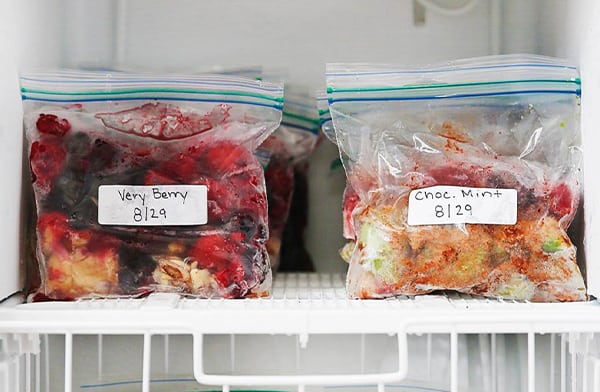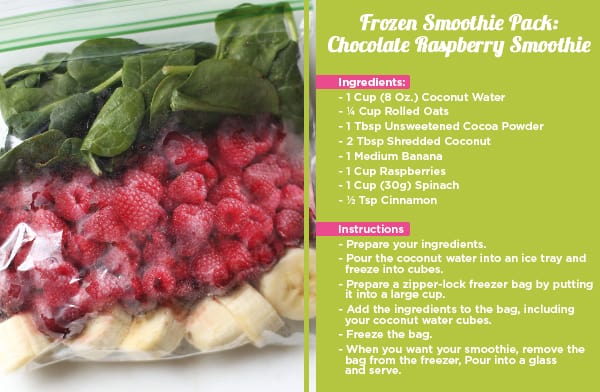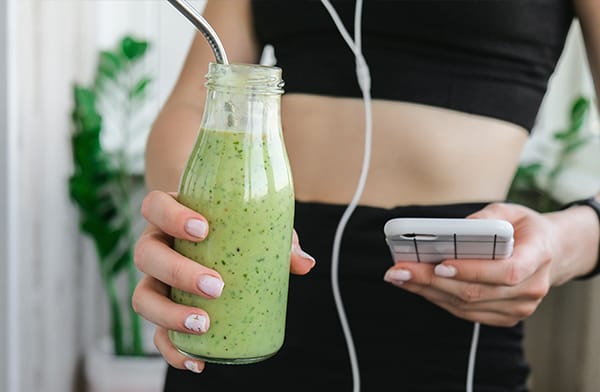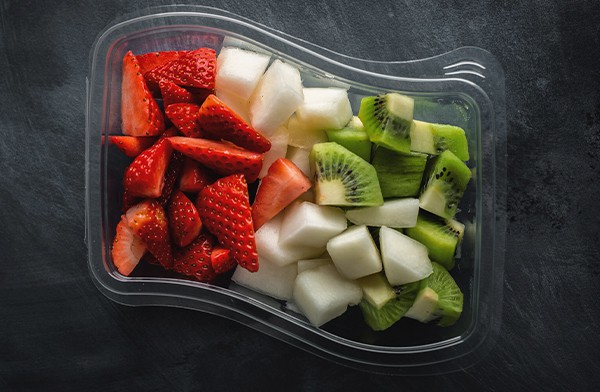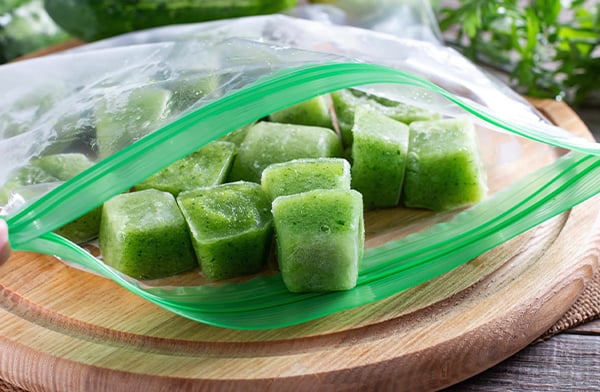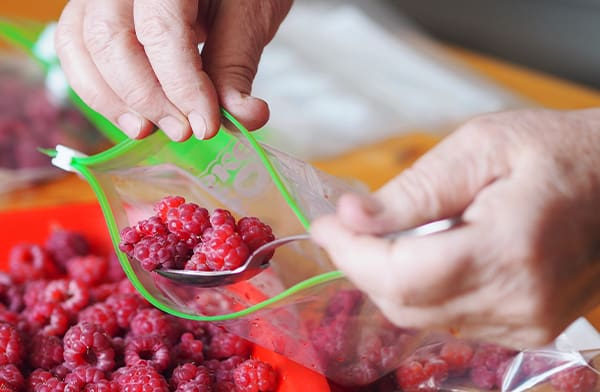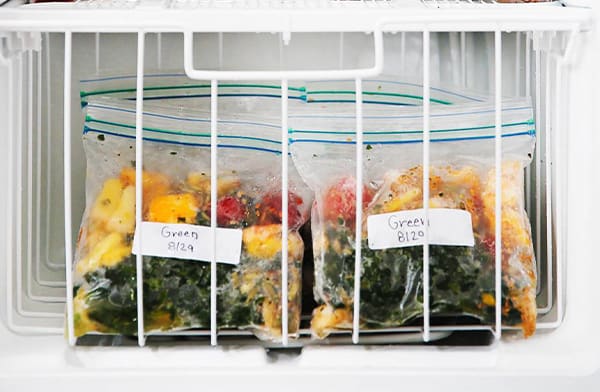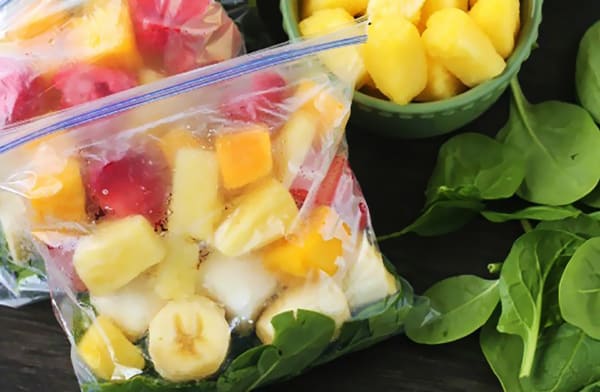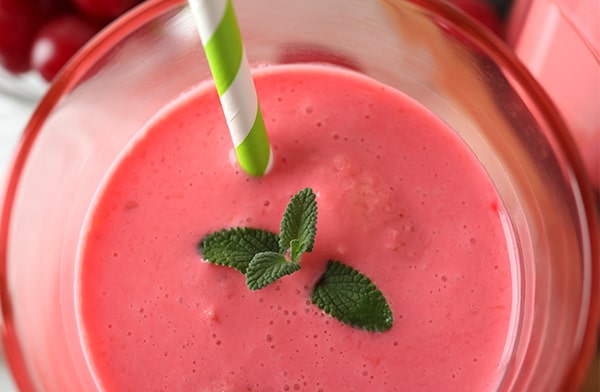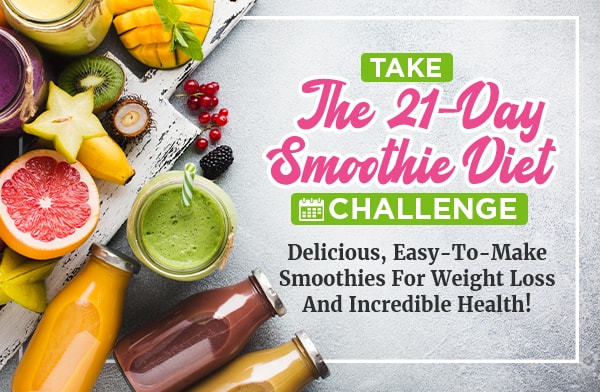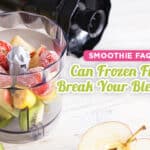How to Make Your Own Frozen Smoothie Packs at Home
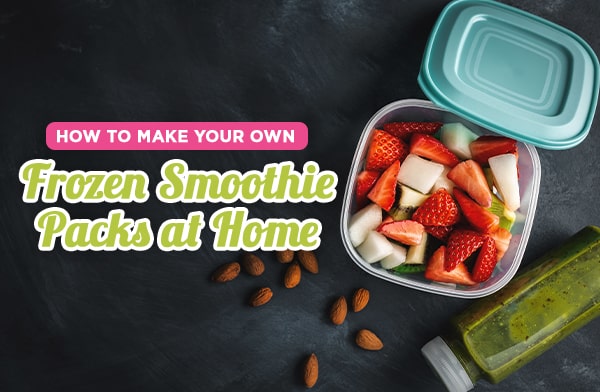
Smoothies are a great option for improving your overall health. They’re made out of healthy fruits, vegetables, and bases like yogurt. They’re lower in calories than your average breakfast, and they’re plenty filling to last you through to lunch (which can be another smoothie) or dinner.
There’s just one problem: prepping them every day can be annoying, tedious, time-consuming, and frustrating. So many problems can crop up!
- Who wants to deal with a knife to chop fruits and veg first thing in the morning?
- Who wants to bleary-eyed measure the proper portions of half a dozen or more ingredients?
- Who wants to sort through produce to decide what smoothie recipe to make that morning?
When you want to get up and get going ASAP, you don’t have the time and the luxury to make all these choices.
Sure, you can make your smoothies in advance and freeze them or store them in the fridge. As long as you pick the right ingredients, it’s not all that difficult to do. The trouble is, they can separate, or oxidize, or gain weird textures or even tastes from other stuff in the fridge or freezer. Even if you follow all of my tips for storing smoothies for later, at some point, there’s just nothing you can really do about it.
Or is there?
Actually, there’s one great solution: a frozen smoothie pack.
What Is a Frozen Smoothie Pack?
A frozen smoothie pack is pretty simple: it’s meal prep for your smoothies. All it is, is a zipper-lock freezer bag (or a plastic or glass container) of your choice, filled with exactly the right amount and combination of ingredients to make one smoothie.
Sounds great, right? It’s quick and easy. You can decide on a recipe, buy all of the ingredients, prepare them in bulk, and divide them up into single-serving portions. Seal them up in containers or bags, squeeze out as much air as you can, and pop them in the freezer. Boom! Now you have several servings of that smoothie, ready to be blended and go.
These are the ultimate in convenient smoothies. Since you’ve prepped them beforehand, all you need to do is pull one out of the freezer, empty the bag into your blender, and pulse it until you’re satisfied with how blended it is.
Example Frozen Smoothie Pack: Chocolate Raspberry Smoothie
This recipe comes straight from my Smoothie Diet core book and is one of the dozens of healthy, great-tasting recipes you can find in that diet plan. If you’re interested, check it out!
Ingredients:
- 1 Cup (8 Oz.) Coconut Water
- ¼ Cup Rolled Oats
- 1 Tbsp Unsweetened Cocoa Powder
- 2 Tbsp Shredded Coconut
- 1 Medium Banana
- 1 Cup Raspberries
- 1 Cup (30g) Spinach
- ½ Tsp Cinnamon
Instructions
- Prepare your ingredients. Wash fruits and vegetables. Peel anything that needs peeling, like the bananas. Measure out portions of your ingredients. Chop items like the banana into more manageable-sized chunks. The quantities above make one serving of smoothie; increase to make however many smoothies you want.
- Pour the coconut water into an ice tray and freeze into cubes.
- Prepare a zipper-lock freezer bag by putting it into a large cup or simply folding the rim back, so it’s easy to add the ingredients.
- Add the ingredients to the bag, including your coconut water cubes. Close the zipper 90% of the way, and squeeze out as much air as you can without squashing your berries and bananas.
- Freeze the bag.
- When you want your smoothie, remove the bag from the freezer, empty it into your blender, and pulse until satisfied. Pour into a glass and serve.
I’ve tried to write the instructions for this recipe to be relatively generic, so they can work for any recipe you want. The ingredients list makes a delicious chocolate-raspberry smoothie so good you’d think it was a milkshake, but it’s way healthier.
Frequently Asked Questions About Frozen Smoothie Packs
I’m sure you have questions since I’ve been asked many of these before. If you have a question I haven’t answered, feel free to ask in the comments, and I’ll do my best to respond.
What do I do if my smoothies turn out too thick?
Most of my recipes are designed to be a great consistency when the ingredients are used fresh. That means, when you freeze them, they may be too thick when you blend them. Luckily, there are several options you can try to solve this.
- Add a bit more of the liquid ingredient. Adding some unfrozen coconut water will thin it out without changing the flavor too much, for example.
- Let the freezer pack thaw some before blending. This can be great if you want a thinner smoothie for lunch; just pull out a breakfast bag and a lunch bag, pop one in the blender, and toss the other in the fridge until lunchtime.
- Add your liquid ingredient separately. Most of my smoothies call for the same amount of liquid ingredient, so you can keep that on hand unfrozen and add it to your smoothie pack when you go to blend it.
It may take some iteration, but eventually, you’ll find a way to make your recipe exactly the right consistency every time.
How long does a frozen smoothie pack stay good?
To a certain extent, this will depend on the ingredients you’re using. Some items turn kind of gross if they’re left in the freezer for more than a few days. Others may get a little freezer-burned but will otherwise taste fine. Some can last for months.
If you want to extend the lifespan of the smoothie packs, consider buying pre-frozen ingredients. These are often flash-frozen in a way that keeps them better preserved, so as long as they don’t thaw too much when you’re assembling your smoothie packs, they should last decently well.
In general, you can assume that a frozen smoothie pack will last about a month in the freezer on average. If you primarily use ingredients like banana, peanut butter, and yogurt, it will last longer. If you use ingredients more prone to freezer burn, it won’t last as long.
Do I have to freeze my liquid ingredients separately?
Not at all! I recommend freezing your liquids (including coconut water, coconut milk, and even yogurt) in an ice tray ahead of time for two reasons. First, it makes it easier to get them out of the bag later. If you just dump a few spoons of yogurt into a bag, even if it’s frozen, it may be difficult to get it all out of the bag later on when you want to blend up the smoothie. Honestly, though, I’ve seen it done both ways, and they can both work fine.
The other reason is that it can make measurement easier. Instead of measuring out a cup of coconut water, you can know that it’s, say, eight ice cubes worth, and add those. You’ll want to adjust depending on the size of your ice tray, of course.
You absolutely don’t need to freeze them separately, though. Do whatever works best for you.
How much of a recipe can I make at once?
As much as you want! My only recommendation is to avoid making too much of any one recipe at once, just so you don’t get tired of it and let it go bad in the freezer. If you make ten servings of a smoothie, even if you love the flavor, you might not want it every day. If you make ten servings of five different smoothies, that’s two months’ worth of smoothies, and you’re bound to let some go off.
That said, it all depends on how much you like a given recipe, how often you’re having smoothies, and, most importantly, how much room you have in your freezer. Remember, you (probably) can’t just dedicate your entire freezer to smoothie packs! You need room for other things, like chicken. Of course, that all changes if you buy a small chest freezer just for smoothie packs.
Is it better to use a bag, a plastic tub, or a glass container?
This is a great question! Should you use a plastic freezer bag, a plastic container, or a glass container? I usually recommend bags, but the truth is, you can use any of them, so long as you’re aware of the pros and cons.
With bags, you’re using a disposable item. Some people wash and re-use the bags, but after two or three uses, they will start to fall apart. They are, eventually, going to have to be thrown away. That’s not a great thing for the environment, though it’s better than a lot of the other disposable items we use in our lives. On the plus side, they’re a lot easier to get most of the air out of them, so they’re more resistant to freezer burn.
With plastic containers, you have a reusable but still cheap container to hold your ingredients. My biggest concern with these is that the cold can make the plastic brittle, so it might not seal well, and it might crack if pressure is applied to it.
Glass containers tend to have better seals and are more resistant to the cold. However, they’re even harder to get the air out of unless you use a vacuum sealer with a specially-designed container. This can be expensive but effective.
The other problem with plastic and glass containers is that they take up more space in the freezer, making them a bulkier choice if you’re making several weeks’ worth of smoothies at a time. That’s up to you, though, and how much space is a concern.
Should I use a vacuum sealer?
The reason I say you should get as much air as possible out of your smoothie container is to avoid freezer burn. Properly vacuum-sealed, a freezer pack can last for months. It’s difficult to vacuum-seal anything that isn’t designed for it, however. Using vacuum bags can be effective, though you do need that additional appliance to make use of them.
Do you need to use one? Absolutely not. If you really want to, you can try the water method with a zipper bag (which is often used in sous vide cooking), which can get most of the air out of the bag more easily and more completely than just squeezing it.
Honestly, though, don’t worry about it unless you’re trying to make dozens of smoothie packs at once. If you’re going to be drinking your smoothies within a few weeks, vacuum sealing won’t add much to notice.
Can any smoothie recipe be made into a frozen smoothie pack?
Pretty much, yeah.
Some ingredients might not freeze as well as others. Watermelon, citrus, and some other fruits turn to mush if they’re thawed after freezing. Other ingredients like apples and avocado oxidize and turn brown and gross-looking, though they still taste fine. Even things like spinach turn into a soggy mess if you thaw them, but you won’t notice that once they’re blended up.
Generally, it doesn’t matter what you freeze, as long as you’re blending your smoothie ingredients while they’re still frozen. It’s only a problem if you want to thaw them first. That said, if you have problems with weird colors or textures, you might want to make small batches of your chosen smoothie first, to make sure it still turns out alright.
Do you have any other questions I didn’t cover? If so, please feel free to ask them below in the comments section! There’s a lot of do’s and don’ts when it comes to making delicious, healthy smoothies, so if there’s any kind of confusion, I’d be more than happy to assist however I can. And, if you want more ideas for smoothie recipes – as well as a diet plan to follow with smoothies to help you lose weight and make dietary adjustments – check out the Smoothie Diet. I have tons of great advice, from ways to make your dinners healthier, to the best blenders to pick up, to – of course – plenty more recipes for great, delicious smoothies to try.

